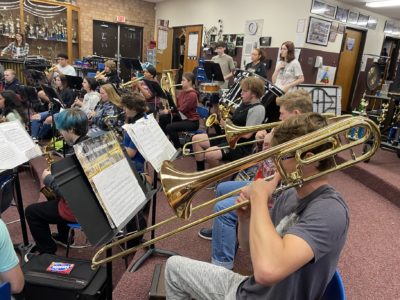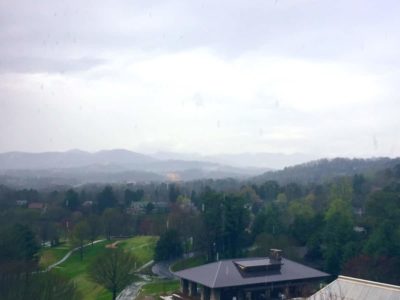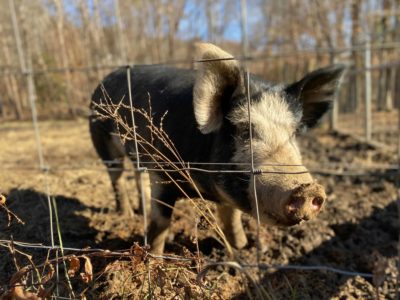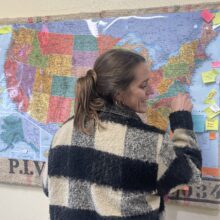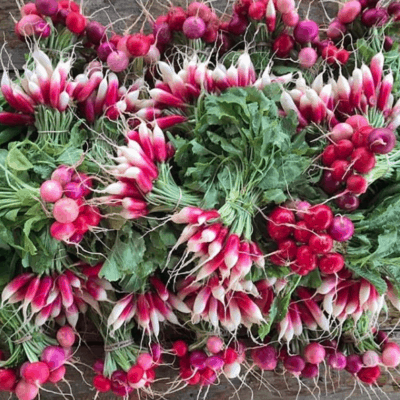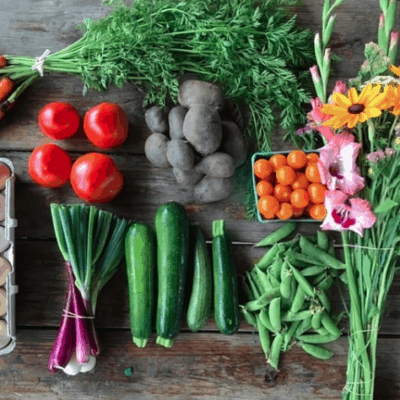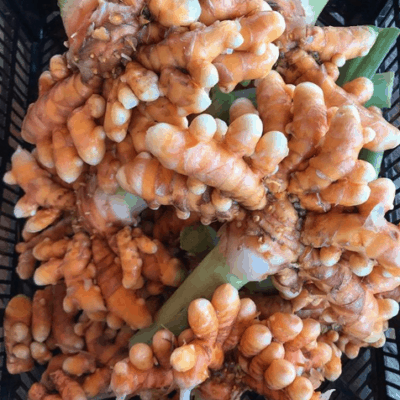Transplanting Traditions, a community farm in Chapel Hill, works with 25 families on eight acres and, as of the 2018 season, has grown over 600,000 pounds of produce. Heard of tatsoi or bitter melon? The farm includes crops that are both traditional to the land and not. The land is farmed by Burmese refugees and families who have made a new home in the area.
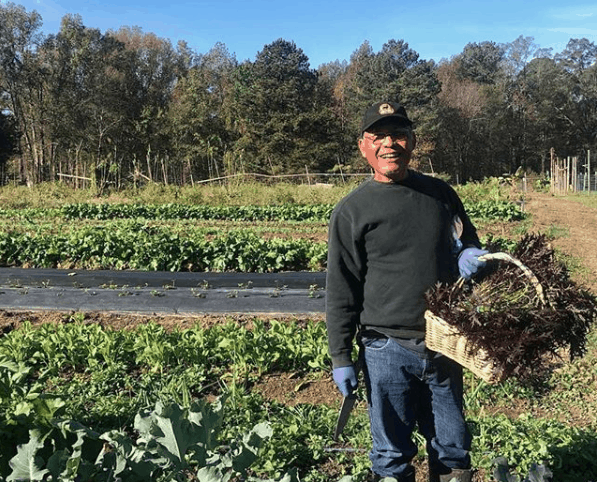
Sara Snyder has been an educational programs coordinator with the farm since August 2018. She studied environmental science at Duke University and then found herself working on a farm in eastern North Carolina before moving to Transplanting Traditions.
Snyder spoke with EdNC.org and explained the mission of Transplanting Traditions and how this organization is helping connect cultures through food and farming. See our conversation below, edited for length and clarity.
Parker: In your words, what is Transplanting Traditions?
Snyder: It’s a community farm for refugees from Burma. All the farmers that we work with were farmers back in Burma before they were resettled here. And they bring with them a deep agricultural knowledge passed down for generations through their families. So Transplanting Traditions does the work of helping them translate the knowledge and skills that they bring to learn how to grow in a new climate and to navigate the very different markets that exists in the U.S.
Parker: Was the mission originally to help families from Burma or was that a group that gravitated towards the space?
Synder: In the very beginning, before it became Transplanting Traditions as it is now, our executive director, Elly Goetz, was managing a community garden for refugees. And then so many refugees from Burma showed up and wanted to farm on a much larger scale and kept asking for more and more rows. Transplanting Traditions formed out of this need that she recognized from this specific group.
Parker: It says on your website you “connect cultures through farming and food.” What does that experience mean to you?
Synder: I think it’s a way to help refugees from Burma recreate home here. So much of culture is tied to food. Helping folks be able to grow foods that they’re familiar with and cook dishes that they’re familiar and also create a space where they feel comfortable in fully embracing their culture is really important in helping folks acclimate here. It is having a community they know they can go to where they feel recognized and supported.
We have such a large CSA (community-supported agriculture) and farmers market, so we are doing some cross-cultural exchange where CSA members are learning more about Asian vegetables and getting excited about it. They are learning more about these people and their cultures. The more people know about their culture, the more familiar and comfortable and welcoming societies are to one another.
So in that way, there’s also a very wonderful cross-cultural exchange that happens. At the end of almost every CSA season, we have a potluck where we invite all the CSA members to come and eat with the CSA farmers. So there’s also this nice exchange that happens over food at these potlucks.
Parker: How many CSA members did you have this year and what does that membership look like?
Synder: So this year we had 150 [members], which was our biggest ever, and this is also our second year doing a winter CSA, which is still pretty uncommon for the area. A typical CSA box would be four to six items for a small share or five to seven for a large share. And what is inside depends on whether you choose to have a mix of regular American vegetables or a mix of Asian and American vegetables. So if you’re doing regular American vegetables, you might see radishes, carrots, lettuce, tomatoes in the summers. There is a whole variety that is really seasonal.
And then if you choose to have an Asian option, the farmers, instead of giving you spinach, they might give you tatsoi, or instead of giving you a squash, they might give you bitter melon that week. They kind of insert some of their own vegetables, which is really great because the farmers really love planting traditional Asian vegetables and it helps give them a market to sell those vegetables through.
Parker: And can you explain to me the structure of land leasing and programs you all offer?
Synder: Yes, so we recently leased land from Triangle Land Conservancy, and then we technically lease the land to the farmers at an extremely subsidized rate.
We also offer farmers a lot of technical support. So during the winter, we offer educational programming. It’s called Winter Growers School. Farmers are invited and they either do classroom or hands-on farm lessons that cover a variety of topics. It could be crop planning, pest management. irrigation systems — it is kind of getting a holistic view of how to operate and run a farm. And some are more focused on plant care, and some are more focused on business management. We also help take them on field trips so they can see how other farmers in the area are growing.
Then, during the summer, we do more support around markets. We help market for the CSA and help them find CSA members. We help advertise and promote for them. It just changes throughout the year depending on what’s going on.
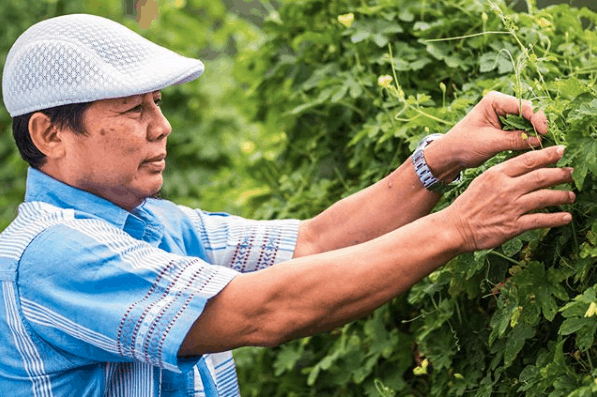
Parker: How are youth involved in Transplanting Traditions?
Synder: So we run a teen program as well. This formed a few years ago, as a lot of the farmers had teenagers, and the teenagers wanted to have a space to speak on behalf of the farmers. So many of the children recognized themselves as Asian Americans growing up in America with much stronger English abilities than that of their parents and that they were willing to advocate for the farmers. This is also what they call themselves — advocates for their community.
Right now, it is formed into a mixture of leadership development and cultural pride. The teens speak at conferences, both as a way to help speak for the farmers and to build their own leadership and public speaking skills. At farmers markets, they do cooking demonstrations with Asian vegetables so shoppers can see how to cook with them. Shoppers are then more likely to buy the produce.
It is also about learning more about the vegetables that are important to their culture. A lot of them know their favorite dishes that their mom cooks, but they usually get pretty excited learning how to cook themselves. So in that way, we’re helping them also again, learn how to speak and be comfortable when presenting in front of people at the farmers market, while also helping them feel like they’re connecting more deeply to their culture.
And they’re also connected to a larger network of other youth groups across the state and across the nation that all are working on different aspects of food justice. Working with these youth groups helps build alliances and relationships to understand how different users are affected by injustices and the different ways that they’re working to improve and advocate for their communities. They are building understanding of larger structural inequalities and different points of action for tackling lives.
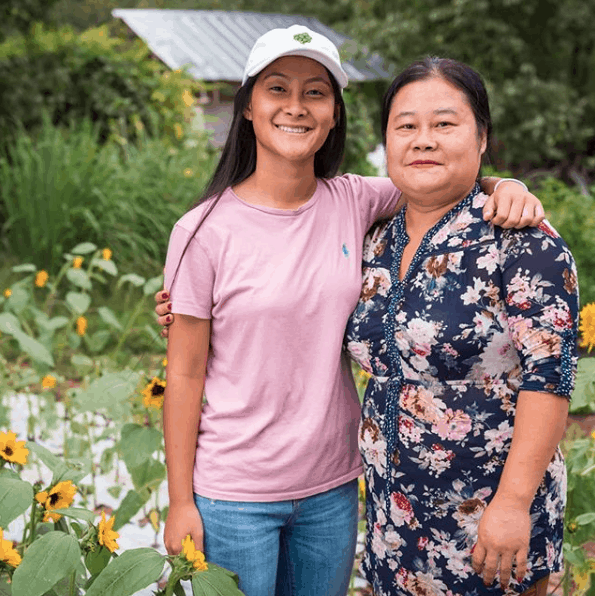
Parker: If there was one thing you’d want people to know about Transplanting Traditions, what would that be?
Synder: In many ways, Transplanting Traditions can be seen as a farmer training program, but I would say oftentimes people forget that it is this very important cultural space for refugees from Burma, even if they aren’t farmers. A lot of times, people from Burma will come out and hang out with friends of the farm and bond. Beyond just helping farmers grow and sell produce, it has fostered and cultivated a really, really special space that has a larger community impact beyond the farmers we work directly with.
Recommended reading
